 W
WBookbinding is the process of physically assembling a book of codex format from an ordered stack of paper sheets that are folded together into sections or sometimes left as a stack of individual sheets. The stack (signature) is then bound together along one edge by either sewing with thread through the folds or by a layer of flexible adhesive. Alternative methods of binding that are cheaper but less permanent include loose-leaf rings, individual screw posts or binding posts, twin loop spine coils, plastic spiral coils, and plastic spine combs. For protection, the bound stack is either wrapped in a flexible cover or attached to stiff boards. Finally, an attractive cover is adhered to the boards, including identifying information and decoration. Book artists or specialists in book decoration can also greatly enhance a book's content by creating book-like objects with artistic merit of exceptional quality.
 W
WAnthropodermic bibliopegy is the practice of binding books in human skin. As of May 2019, The Anthropodermic Book Project has examined 31 out of 50 books in public institutions supposed to have anthropodermic bindings, of which 18 have been confirmed as human and 13 have been demonstrated to be animal leather instead.
 W
WThe Wittockiana is a public museum and library located in Brussels (Belgium) devoted to the arts of the book and of bookbinding.
 W
WBiernagels are conical, hemispherical or pyramid shaped fittings on the outer covers of books used in tableround and commercium type academic feasts. Primarily biernagels are used on German song books called "Kommersbuch", which are similar to the studentencodex song books used in Belgium. Also guestbooks are sometimes fitted with biernagels.
 W
WBindery refers to a studio, workshop or factory where sheets of (usually) paper are fastened together to make books, but also where gold and other decorative elements are added to the exterior of books, where boxes or slipcases for books are made and where the restoration of books is carried out.
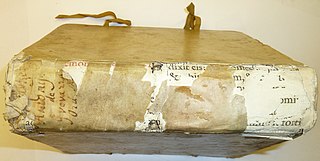 W
WBinding waste is damaged, misprinted, or surplus paper or parchment reused in bookbinding. Whether as whole sheets or fragments, these may be used as the exterior binding, as the endpapers, or as a reinforcement beneath the spine.
 W
WA board book is a type of children's book printed on thick paperboard. The paperboard is printed and used for both the cover and the interior pages. Each page panel is a minimum of two plies of paperboard thickness. Unlike a typical paper book that is bound with saddle stitching (staples) or perfect binding, a board book's pages are specially folded and bound together.
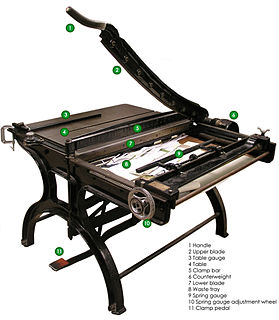 W
WUsed extensively in bookbinding, a board shear is a large, hand-operated machine for cutting board or paper. Like scissors, a board shear uses two blades to apply shear stress exceeding the paper's shear strength in order to cut. The stationary blade forms the edge of the cutting table, with the moving blade mounted on a cutting arm. Originally known as a table gauge shear because its gauge allowed the cutting of consistently-sized materials, the board shear resembles a larger version of the paper cutters commonly found in offices.
 W
WBonded leather, also called reconstituted leather or blended leather, is a term used for a manufactured upholstery material which contains animal hide. It is made as a layered structure of a fiber or paper backer covered with a layer of shredded leather fibers mixed with natural rubber or a polyurethane binder that is embossed with a leather-like texture.
 W
WA bone folder, bonefolder, or folding bone is a dull-edged hand tool used to fold and crease material in crafts such as bookbinding, cardmaking, origami, and other paper crafts that require a sharp crease or fold. The tool was also used when correspondence by letter writing was more formal and an art.
 W
WA book cover is any protective covering used to bind together the pages of a book. Beyond the familiar distinction between hardcovers and paperbacks, there are further alternatives and additions, such as dust jackets, ring-binding, and older forms such as the nineteenth-century "paper-boards" and the traditional types of hand-binding. The term "Bookcover" is often used for a book cover image in library management software. This article is concerned with modern mechanically produced covers.
 W
WBook rebinding is the renewal or replacement of the cover of a book. Typically, this requires restitching or renewal of the glue which holds the pages in place.
 W
WThe British Library contains a wide range of fine and historic bookbindings; however, books in the Library are organised primarily by subject rather than by binding so the Library has produced a guide to enable researchers to identity bindings of interest. The collection includes the oldest intact Western bookbinding, the leather binding of the 7th century St Cuthbert Gospel.
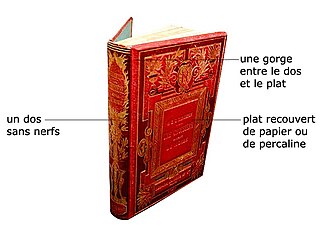 W
WA Bradel binding is a style of book binding with a hollow back. It most resembles a case binding in that it has a hollow back and visible joint, but unlike a case binding, it is built up on the book. Characteristic of the binding is the material covering the outside boards is separate from the material covering the spine. Many bookbinders consider the Bradel binding to be stronger than a case binding.
 W
WBookbinding is the process of physically assembling a book of codex format from an ordered stack of paper sheets that are folded together into sections or sometimes left as a stack of individual sheets. The stack (signature) is then bound together along one edge by either sewing with thread through the folds or by a layer of flexible adhesive. Alternative methods of binding that are cheaper but less permanent include loose-leaf rings, individual screw posts or binding posts, twin loop spine coils, plastic spiral coils, and plastic spine combs. For protection, the bound stack is either wrapped in a flexible cover or attached to stiff boards. Finally, an attractive cover is adhered to the boards, including identifying information and decoration. Book artists or specialists in book decoration can also greatly enhance a book's content by creating book-like objects with artistic merit of exceptional quality.
 W
WA catchword is a word placed at the foot of a handwritten or printed page that is meant to be bound along with other pages in a book. The word anticipates the first word of the following page. It was meant to help the bookbinder or printer make sure that the leaves were bound in the right order or that the pages were set up in the press in the right order. Catchwords appear in some medieval manuscripts, and appear again in printed books late in the fifteenth century. The practice became widespread in the mid sixteenth century, and prevailed until the arrival of industrial printing techniques late in the eighteenth century.
 W
WComb binding is one of many ways to bind pages together into a book. This method uses round plastic spines with 19 rings or 21 rings and a hole puncher that makes rectangular holes. Comb binding is sometimes referred to as plastic comb binding or spiral comb binding.
 W
WCoptic binding or Coptic sewing comprises methods of bookbinding employed by early Christians in Egypt, the Copts, and used from as early as the 2nd century AD to the 11th century. The term is also used to describe modern bindings sewn in the same style.
 W
WA cumdach or book shrine is an elaborate ornamented box or case used as a reliquary to enshrine books regarded as relics of the saints who had used them in Early Medieval Ireland. They are normally later than the book they contain, often by several centuries, typically the book comes from the heroic age of Irish monasticism before 800, and the surviving cumdachs date from after 1000, although it is clear the form dates from considerably earlier. Several were then considerably reworked in the Gothic period. The usual form is a design based on a cross on the main face, with use of large gems of rock crystal or other semi-precious stones, leaving the spaces between the arms of the cross for more varied decoration. Several were carried on a chain or cord, often suspended round the neck, which by placing them next to the heart was believed to bring spiritual and perhaps medical benefits. They were also used to witness contracts. Many had hereditary lay keepers from among the chiefly families who had formed links with monasteries. Most surviving examples are now in the National Museum of Ireland ("NMI").
 W
WDisc-binding is a type of notebook binding that uses discs to hold the sheets of paper. Each disc has a raised edge. Notebook sheets have perforations along the binding edge that match the profile and spacing of the binding discs.
 W
WThe Domhnach Airgid is an 8th-century Irish metalwork and wooden cumdach, since 1847 in the National Museum of Ireland in Dublin. It is traditionally associated with Saint Patrick, who was thought to have had it in his possession at one point. The shrine was built in three main phases; in the late 8th and 9th centuries, and in the 14th and 15th centuries. It is thus considered a mixture of the early Insular art and later International Gothic styles.
 W
WIn bookbinding, a dos-à-dos binding is a binding structure in which two separate books are bound together such that the fore edge of one is adjacent to the spine of the other, with a shared lower board between them serving as the back cover of both. When shelved, the spine of the book to the right faces outward, while the spine of the book to the left faces the back of the shelf; the text of both works runs head-to-tail.
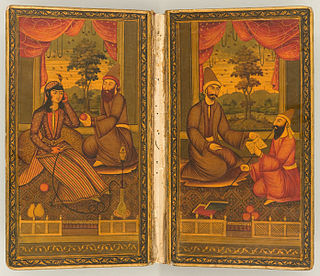 W
WDoublures are ornamental linings on the inside of a book. Doublures are protected from wear, compared to the outside of a book, and thus offer bookbinders scope for elaborate decoration.
 W
WEmbroidered binding, also referred to as needlework or textile binding, describes a book bound in textile, decorated with a design on both covers created for the individual book.
 W
WAn endband is a part of a book, most often found with hardcover bindings, that consists of a small cord or strip of material affixed near the spine to provide structural reinforcement and sometimes decorative effect. An endband along the top edge of the book is called a headband, and one along the bottom edge is called a tailband.
 W
WThe endpapers or end-papers of a book are the pages that consist of a double-size sheet folded, with one half pasted against an inside cover, and the other serving as the first free page. Thus, the front endpapers precede the title page and the text, whereas the back endpapers follow the text. Booksellers sometimes refer to the front endpaper as FEP.
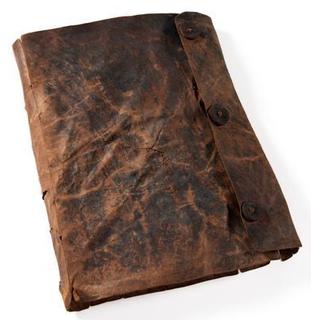 W
WThe Faddan More Psalter is an early medieval Christian psalter or text of the book of Psalms, discovered in a peat bog in July 2006, in the townland of Faddan More in north County Tipperary, Ireland. The manuscript was probably written in about 800 CE in one of a number of monasteries in the area. A unique feature is that the inside of the leather cover is lined with papyrus, probably as a stiffening, an indication of the links between the Irish and Coptic churches at the time. After several years of conservation work, the psalter went on display at the National Museum of Ireland in Kildare St, Dublin in June 2011.
 W
WThe Felbrigge Psalter is an illuminated manuscript Psalter from mid-13th century England that has an embroidered bookbinding which probably dates to the early 14th century. It is the oldest surviving book from England to have an embroidered binding. The embroidery is worked in fine linen with an illustration of the Annunciation on the front cover and an illustration of the Crucifixion on the back.
 W
WIn bookbinding, finishing refers to the process of decorating the outside of a book, including the lettering of the spine and covers, any additional tooling, and any inlays and onlays. Finishing can also include the gilding or other decoration of the edges of the book's pages.
 W
WThe term "folio", from the Latin folium (leaf), has three interconnected but distinct meanings in the world of books and printing: it is firstly a term for a common method of arranging sheets of paper into book form, folding the sheet only once, and a term for a book made in this way; secondly it is a general term for a sheet, leaf or page in (especially) manuscripts and old books; and thirdly it is an approximate term for the size of a book, and for a book of this size.
 W
WFragmentology is the study of surviving fragments of manuscripts. A manuscript fragment may consist of whole or partial leaves, typically made of parchment, conjugate pairs or sometimes gatherings of a parchment book or codex, or parts of single-leaf documents such as notarial acts. They are commonly found in book bindings, especially printed books from the 15th to the 17th centuries, used in a variety of ways such as wrappers or covers for the book, as endpapers, or cut into pieces and used to reinforce the binding. In other non-Western manuscript cultures, fragments of paper manuscripts and other materials, takes place beside parchment, including board covers that many times reused written paper.
 W
WThe Grolier Club is a private club and society of bibliophiles in New York City. Founded in January 1884, it is the oldest existing bibliophilic club in North America. The club is named after Jean Grolier de Servières, Viscount d'Aguisy, Treasurer General of France, whose library was famous; his motto, "Io. Grolierii et amicorum" [of or belonging to Jean Grolier and his friends], suggested his generosity in sharing books. The Club's stated objective is "the literary study of the arts pertaining to the production of books, including the occasional publication of books designed to illustrate, promote and encourage these arts; and the acquisition, furnishing and maintenance of a suitable club building for the safekeeping of its property, wherein meetings, lectures and exhibitions shall take place from time to time ..."
 W
WJean Grolier de Servières, viscount d'Aguisy was Treasurer-General of France and a famous bibliophile. As a book collector, Grolier is known in particular for his patronage of the Aldine Press, and his love of richly decorated bookbindings.
 W
WThe Guild of Women-Binders was an organization founded to promote and distribute the work of women bookbinders at the turn of the 20th century. It was founded by Frank (Francis) Karslake in 1898, and disbanded in 1904. It helped sell bindings produced by women binders already practicing, and instituted training programs to teach other women.
 W
WIn bookbinding, inlays and onlays are pieces of leather adhered to the cover of a book, usually differing in color, grain, or both from the main covering leather. While they are complementary techniques, and may appear similar in their final forms, they are distinct in how they are constructed.
 W
WThe Kalamazoo Book Arts Center (KBAC) is a nonprofit organization of artists and writers located in Kalamazoo, Michigan.
 W
WThe Lindau Gospels is an illuminated manuscript in the Morgan Library in New York, which is important for its illuminated text, but still more so for its treasure binding, or metalwork covers, which are of different periods. The oldest element of the book is what is now the back cover, which was probably produced in the later 8th century in modern Austria, but in the context of missionary settlements from Britain or Ireland, as the style is that of the Insular art of the British Isles. The upper cover is late Carolingian work of about 880, and the text of the gospel book itself was written and decorated at the Abbey of Saint Gall around the same time, or slightly later.
 W
WLongstitch is a bookbinding technique used for sewing together the sections of a book. There are different forms of longstitch sewings. Longstitch binding does not require glue, though there are methods that utilize glue. In his book Non Adhesive Bindings, Keith Smith describes the "Longstitch through a slotted cover" and it involves sewing each section directly through the cover where slots have been made at each sewing station. This sewing method creates a staggered line pattern visible on the spine. Keith Smith indicates that this type of longstitch was used as early as the 18th century in some parts of Europe, and possibly earlier.
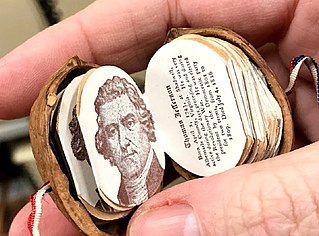 W
WA miniature book is a very small book. Standards for what may be termed a miniature rather than just a small book have changed through time. Today, most collectors consider a book to be miniature only if it is 3 inches or smaller in height, width, and thickness, particularly in the United States. Many collectors consider nineteenth-century and earlier books of 4 inches to fit in the category of miniatures. Book from 3-4 inches in all dimensions are termed macrominiature books. Books less than 1 inch in all dimensions are called microminiature books. Books less than 1/4 inch in all dimensions are known as ultra-microminiature books.
 W
WMorocco leather is a soft, pliable form of leather widely used for gloves and the uppers of ladies' shoes and men's low cut shoes, but traditionally associated with bookbindings, wallets, linings for fine luggage, and the like.
 W
WRed rot is a degradation process found in vegetable-tanned leather.
 W
WIn bookbinding, a section, gathering, or signature is a group of sheets folded in half, to be worked into the binding as a unit.
 W
WA soft book is a type of children's book intended for pre-readers aimed primarily at babies. They are typically made of fabric, although they can also by made of soft plastic and used in the bath. They may also have an auditory component, like cellophane sheets to provide a crinkly sound. They may contain other features, like teething components, mirrors, flaps, and different textures. Soft books typically feature no or few words.
 W
WThe St Cuthbert Gospel, also known as the Stonyhurst Gospel or the St Cuthbert Gospel of St John, is an early 8th-century pocket gospel book, written in Latin. Its finely decorated leather binding is the earliest known Western bookbinding to survive, and both the 94 vellum folios and the binding are in outstanding condition for a book of this age. With a page size of only 138 by 92 millimetres, the St Cuthbert Gospel is one of the smallest surviving Anglo-Saxon manuscripts. The essentially undecorated text is the Gospel of John in Latin, written in a script that has been regarded as a model of elegant simplicity.
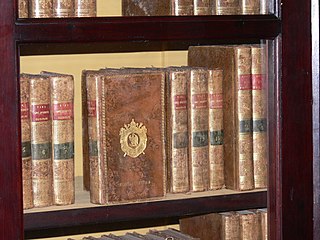 W
WA supralibros is a coat of arms or monogram indicating the ownership of a book. Unlike the bookplate or ex-libris, which is stamped or pasted inside a book, the supralibros is applied to the book's cover.
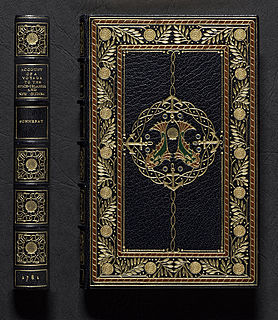 W
WSangorski & Sutcliffe is a firm of bookbinders established in London in 1901. It is considered to be one of the most important bookbinding companies of the 20th century, famous for its luxurious jeweled bindings that used real gold and precious stones in their book covers.
 W
WTraditional Chinese bookbinding, also called stitched binding, is the method of bookbinding that the Chinese, Koreans, Japanese, and Vietnamese used before adopting the modern codex form.
 W
WA treasure binding or jewelled bookbinding is a luxurious book cover using metalwork in gold or silver, jewels, or ivory, perhaps in addition to more usual bookbinding material for book-covers such as leather, velvet, or other cloth. The actual bookbinding technique is the same as for other medieval books, with the folios, normally of vellum, stitched together and bound to wooden cover boards. The metal furnishings of the treasure binding are then fixed, normally by tacks, onto these boards. Treasure bindings appear to have existed from at least Late Antiquity, though there are no surviving examples from so early, and Early Medieval examples are very rare. They were less used by the end of the Middle Ages, but a few continued to be produced in the West even up to the present day, and many more in areas where Eastern Orthodoxy predominated. The bindings were mainly used on grand illuminated manuscripts, especially gospel books designed for the altar and use in church services, rather than study in the library.
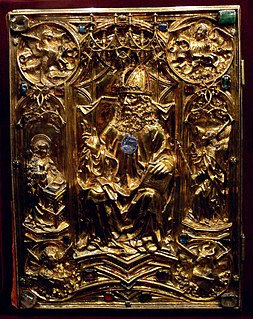 W
WThe Vienna Coronation Gospels, also known simply as the Coronation Gospels, is a late 8th century illuminated Gospel Book produced at the court of Charlemagne in Aachen. It was used by the future emperor at his coronation on Christmas Day 800, when he placed three fingers of his right hand on the first page of the Gospel of Saint John and took his oath. Traditionally, it is considered to be the same manuscript that was found in the tomb of Charlemagne when it was opened in the year 1000 by Emperor Otto III. The Coronation Evangeliar cover was created by Hans von Reutlingen, c. 1500. The Coronation Evangeliar is part of the Imperial Treasury (Schatzkammer) in the Hofburg Palace in Vienna, Austria.
 W
WWire binding is a popular commercial book binding method, and is known by a number of different names including twin loop wire, wire-o, double loop wire, double-o, ring wire and wirebind. With this binding method, users insert their punched pages onto a "C" shaped spine and then use a wire closer to squeeze the spine until it is round. Documents that are bound with wire binding will open completely flat on a desk and allow for 360 degree rotation of bound pages.